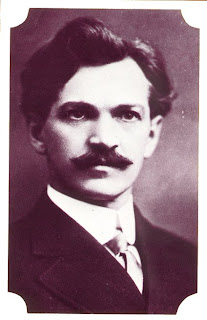
Mr. Pelletier came to Skagway from New York in 1897 to cover the Gold Rush. In addition to being a newspaperman, he was also a journalist. He was a man possessed of a small body, a large head, and nervous energy that was electrifying. As a newspaperman, he covered the Klondike stampede for The New York Times.
His dispatches to the Times, covering the period 1897 to 1900, provide enthralling reading: he narrated tales of precautions against starvation, delays due to selfishness, preventing a corner in supplies, smallpox comes to camp, getting ready for the greenhorns, pistols drawn many times, large loss of life and a murder, no time for legal trials. Sounds like an adventure movie.
Working for Henry Ford, first as a consulting engineer and later when it was obvious he was considerably more adept with words than machines, Pelletier worked as Ford’s private secretary and advertising manager.
He preferred the title “publicity engineer.” That he was. A brilliant intellect matched with a vivid imagination, he could think even faster than he could talk, and his conversation was routinely described as “rapid-fire.”
His September 5, 1938 Detroit obituary follows:
“E. Leroy Pelletier, 72, advertising manager for Henry Ford, died Sunday.
Pelletier was a former newspaperman who covered the Klondike Gold rush. He designed the first four-cylinder air-cooled automobile at the turn of the century and was president of the company which built his automobile the “Duquesne”.
Tales of Klondike veterans told how Pelletier, the energetic New York reporter, organized the “Jackson Money Exchange” and reputedly sold, through the agency, a third of the Klondike region.
Surviving Pelletier are his widow, Gertrude; 2 sons and a daughter; a brother Frank (Pelkey) of Vancouver,BC. Pelletier was a native of Houlton, Maine.”
In the fall of 1897 he founded the Yukon Telephone and Telegraph Company in Dawson w/big Alex McDonald.
photos from 1897-98: online from Tappan Adney; rootsweb; p206 The EMF co.book by Yanik
 In 1898 everyone had their own scheme to get rich, and not everyone was goldrushing!
In 1898 everyone had their own scheme to get rich, and not everyone was goldrushing!







